 When I saw that Beth Ferry’s website had this quote from Albus Dumbledore (“Words are, in my not-so-humble opinion, our most inexhaustible source of magic”), I knew she’d be a terrific choice for the February 2021 Author Interview at OPB.
When I saw that Beth Ferry’s website had this quote from Albus Dumbledore (“Words are, in my not-so-humble opinion, our most inexhaustible source of magic”), I knew she’d be a terrific choice for the February 2021 Author Interview at OPB.
Plus, she was already on my radar thanks to my trip to Book Expo America in May 2019.
Hmm…I wonder why…
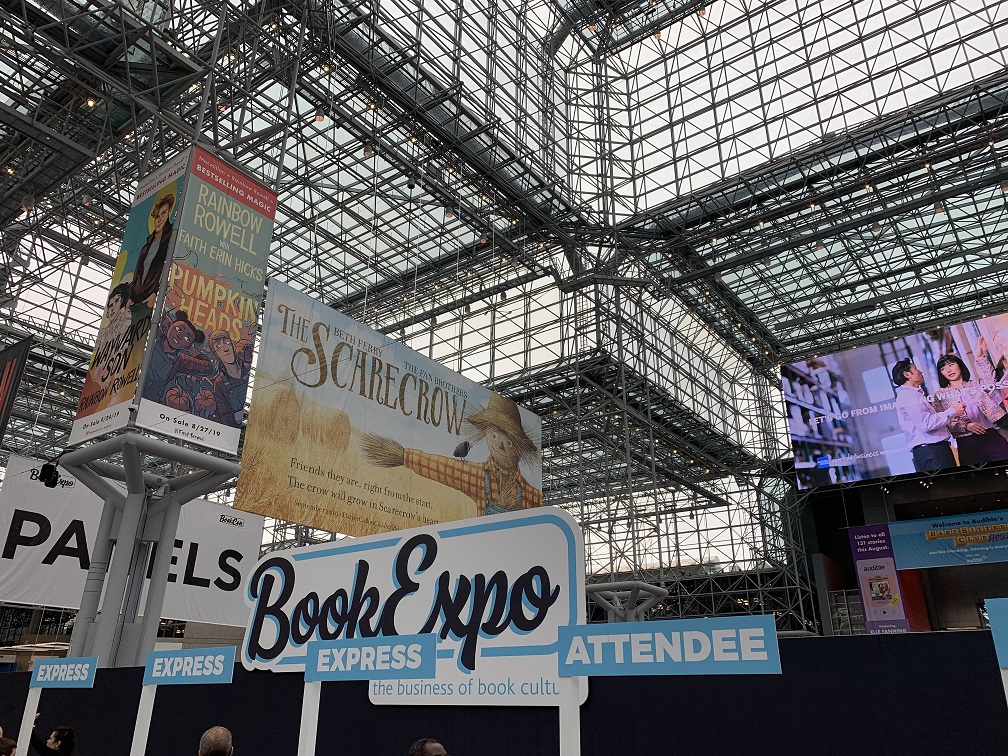
In case you don’t see the fun here, the banner (above) for Beth’s book (below) was about fifty feet long. Maybe bigger.
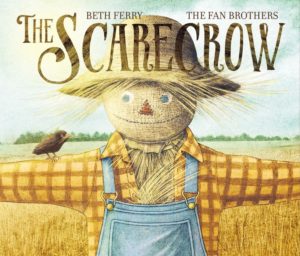
Before we get to Beth directly, let’s do a little more backgrounding.
Beth:
- loves every shade of purple
- has mad love for bulldogs
- lives within a stone’s throw of a New Jersey beach
- only grows pumpkins in her garden
- can never have enough lemon cookies and hot tea
- adores Anne Shirley of Anne of Green Gables
And she’s the author of more than a dozen picture books including these fine titles (which I heartily endorse).
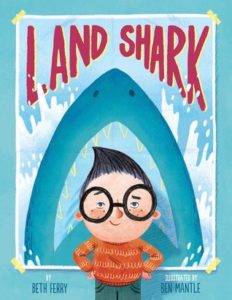
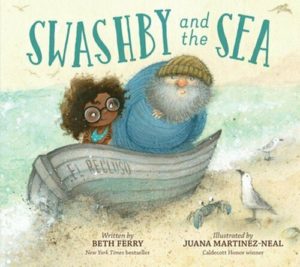
Okay, now that we’ve gotten a good sense of who Beth is and what she’s about, let’s dive into the interview.
Website: www.bethferry.com
Twitter: @bethferry1
Instagram: @bethferry1
RVC: What role did SCBWI (Society of Children’s Books Writers and Illustrators) play in your writing journey?
BF: SCBWI was the first real resource that helped me understand how publishing works. It answered the many questions I had and showed me how much I really needed to learn. SCBWI taught me to treat my writing as a profession. Once I approached writing that way, it helped focus me.
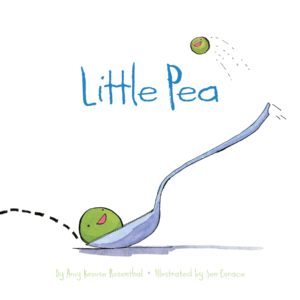 RVC: What were some crucial mentor texts in those early years of writing?
RVC: What were some crucial mentor texts in those early years of writing?
BF: The first book that comes to mind is Little Pea by Amy Krouse Rosenthal. That book made me realize the simplicity, the complexity, the brilliance, and the sublime silliness inherent in the best picture books. It was the book I remember having on my desk when I wrote Stick and Stone.
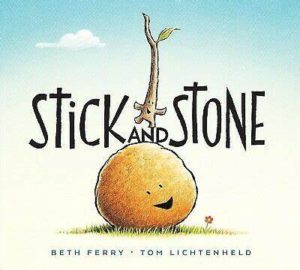 RVC: What’s the story behind Stick and Stone, your first picture book sale?
RVC: What’s the story behind Stick and Stone, your first picture book sale?
BF: I brought Stick and Stone to NJ SCBWI’s June 2011 conference. I had a one-on-one with an editor from Penguin who gave me some really positive feedback. He encouraged me to get an agent.
RVC: Is that how you ended up with super-agent Elena Giovinazzo at Pippin Properties?
BF: Like I said, I was told: “Get an agent.”
Three little words.
One BIG task.
RVC: Totally agree!
BF: I submitted Stick and Stone to Pippin in the fall of 2011 and Elena pulled it from the slush pile and sold it in December. How’s that for crazy?
RVC: I often tell my students that hard work + timing + luck is the winning combo. Clearly it was for you, too!
But back to that first book. The hardest part of writing Stick and Stone was __________.
BF: …keeping to the word count I set for myself. I gave myself the goal of writing a story in under 200 words. I began writing Stick and Stone in prose, but couldn’t keep to the word count, so I decided to try it in rhyme. Once I switched over to rhyme, it just worked.
RVC: What surprised you most about Tom Lichtenheld’s illustrations?
BF: How perfect they were. Tom sent 3 different versions of the book for us to consider. I’m sure that every author you interview will tell you that the feeling of seeing the art for your very first book for the very first time is magical, indescribable, euphoric. And it is. Tom’s illustrations brought the story to life in the most perfect way. What surprised me even more is what a great guy he is. I’m extremely lucky to get to work with someone as talented and wise as he is.
RVC: Picture books are a whole bunch of collaborations of one type or another, but perhaps the most important is the author + agent combo. Why are you and Elena such a great fit?
BF: Elena understands that I’m prolific and supports me fully, no matter how many manuscripts I send her. She often pushes me to write things I may not have considered writing, such as graphic novels and chapter books. I know she believes in me and that helps me through the ups and downs of publishing.
RVC: What’s Elena’s superpower?
BF: Persistence! She never gives up on a story that we both love, or that I feel very strongly about. If it gets rejected a number of times, we might take a break from submission, but I know she’ll never give up on it, which really translates to knowing she’ll never give up on me.
If that’s not a superpower, I don’t know what is.
RVC: When did you realize that you could do this for a living? And how did you know?
BF: That’s a great question with not a great answer. I write because I love it, because I can’t not write. I would do it even if I couldn’t make a living at it. There’s no magic moment where you believe you’ve made it or done it. There’s always just the next book. The next great idea.
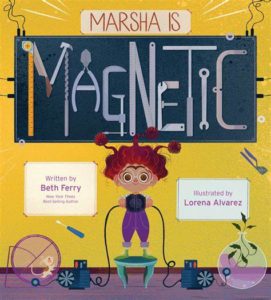 RVC: You just had a new book come out in January—Marsha Is Magnetic. When I first read it, I was struck by the pace of the book. When you turn in a manuscript like this, are you marking the page breaks yourself? How conscious are you of crafting effective page turns?
RVC: You just had a new book come out in January—Marsha Is Magnetic. When I first read it, I was struck by the pace of the book. When you turn in a manuscript like this, are you marking the page breaks yourself? How conscious are you of crafting effective page turns?
BF: I never paginate any of my manuscripts and actually don’t consciously consider page turns. I know how important they are, yet I focus more on making sure the story is satisfying. That’s my favorite word to describe a successful picture book – satisfying!
RVC: It seems as if you like rhyme even though you write plenty of books that don’t use it. In those non-rhyming books (like Marsha Is Magnetic) how much do you tinker with the text to get the sound and rhythm satisfying?
BF: I love writing in rhyme and I always try to have some type of rhyme in all my books, whether it’s internal rhyme or just a rhyming couplet thrown in there somewhere. But you’re totally right that there’s a rhythm and pace to all picture books and I work really hard to make sure that my books have this. I spend most of my time tweaking my stories until I love how they sound when I read them aloud.
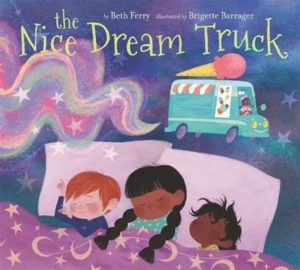 RVC: And…you’ve got a new book coming out in just over a month. It’s a bedtime story entitled The Nice Dream Truck. Care to give us a little teaser?
RVC: And…you’ve got a new book coming out in just over a month. It’s a bedtime story entitled The Nice Dream Truck. Care to give us a little teaser?
BF: Oh, how I love everything about this book. Playing with the words ice cream was the spark for the story and anything that has to do with ice cream and words is pretty excellent in my book. And this book explores the idea that nice dreams can be served up just like ice cream. It’s a bedtime story that encourages children to choose what they want to dream about right before going to sleep. I’ll have a triple scoop of bulldog puppies, please!
RVC: Me, too! Sounds sleepily scrumptious.
How do you handle making a bedtime book engaging while not revving a kid up so much that they (ironically) can’t get to sleep?
BF: I think the moments right before we fall asleep are when our minds are open to anything. We revisit parts of our day or we think of things we’re looking forward to. The idea that children can and should dream about goals or hopes or even fantastical romps with narwhals seems like such a satisfying way to head into dreamland.
RVC: In what ways did illustrator Brigette Barrager expand your original vision for The Nice Dream Truck?
BF: Brigette’s color palette is so dreamy and perfect. It totally captured the nighttime feel I had imagined, but her use of popsicles and ice cream scoops and cones for all the dream scenarios was such a wonderful surprise. Every page is full of ice cream! It makes so much sense, but it still surprised me!
RVC: You seem like you’ve got a very full plate in terms of your writing—witness five picture books coming out in 2021, and four in 2022! Congrats on all that success. How do you balance new work and under-contract projects? Between your writing and non-writing life?
BF: Time is such a strange thing. They say, if you want something done, ask a busy person. Which used to be me. But my three little “busys” have grown up, so now there’s not much difference between my writing life and my non-writing life.
RVC: One last question for this part of the interview. Clearly, you’re a Harry Potter fan. If you had JK’s blessing to do a Potter-themed picture book, what would you do?
BF: What a fun question! I think I’d have to do an unexpected friendship story, possibly between Hedwig and another owl. I’ve always wanted to do an owl book!
RVC: As JK might say, “Aparecium Interview Part 2!” which means, of course, that it’s now time for the SPEED ROUND. Zippy questions and zappy answers. Ready?
BF: Hit me!
RVC: Best place in Jersey for slice of pizza?
BF: Carmen’s Pizzeria in Neptune, a.k.a. Pete and Elda’s.
RVC: What’s your biggest time waster?
BF: Watching Top Chef. I don’t even like to cook.
RVC: Which of your picture book characters thinks they’re most like you?
BF: Swashby!
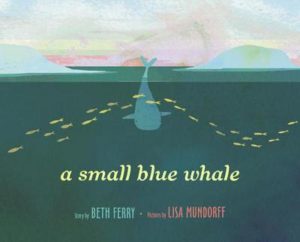 RVC: Which of your picture book characters is ACTUALLY most like you?
RVC: Which of your picture book characters is ACTUALLY most like you?
BF: The whale from A Small Blue Whale.
RVC: What are some recent picture books that really got your attention?
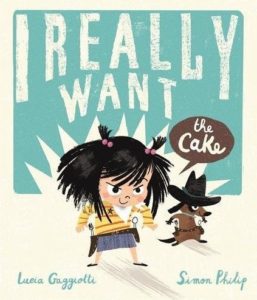 BF: I just read The Infamous Ratsos by Kara LaReau and loved it so much (although technically, it’s a chapter book.) I also thoroughly enjoyed the sweetness of Truman by Jean Reidy. I Really Want the Cake by Simon Philip made me laugh. And Tom Lichtenheld’s Louis, which he wrote, but did not illustrate, completely charmed me.
BF: I just read The Infamous Ratsos by Kara LaReau and loved it so much (although technically, it’s a chapter book.) I also thoroughly enjoyed the sweetness of Truman by Jean Reidy. I Really Want the Cake by Simon Philip made me laugh. And Tom Lichtenheld’s Louis, which he wrote, but did not illustrate, completely charmed me.
RVC: Best compliment a child ever gave your books?
BF: The very first time I read Stick and Stone to a group of 4‑year olds, they clapped. I was so surprised and delighted. I will never forget that day.
RVC: Thanks so much, Beth! Best of luck with your new titles this year!
BF: Thank you, Ryan, for these wonderful questions. I really enjoyed this.


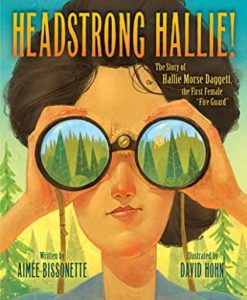
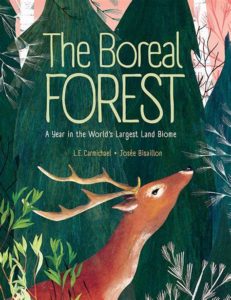
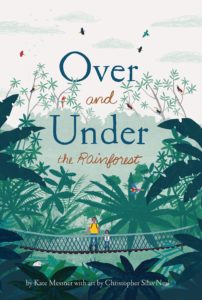
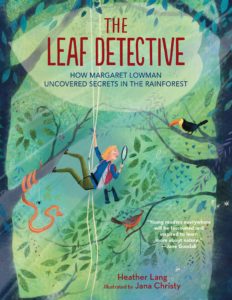
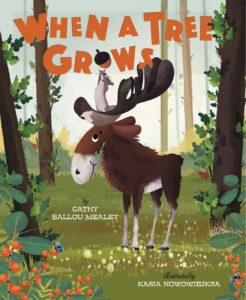
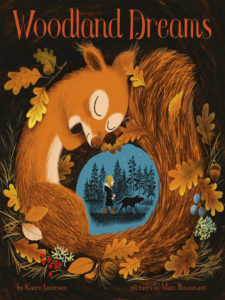
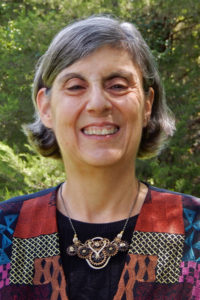 This month’s author interview is with award-winning children’s book author, Laurie Wallmark, who writes wonderful picture books and regularly presents at conferences. She also offers webinars on kidlit writing, too, like the one I attended last week from her at
This month’s author interview is with award-winning children’s book author, Laurie Wallmark, who writes wonderful picture books and regularly presents at conferences. She also offers webinars on kidlit writing, too, like the one I attended last week from her at 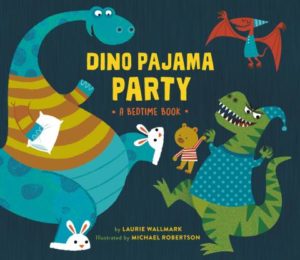
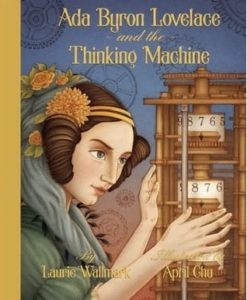
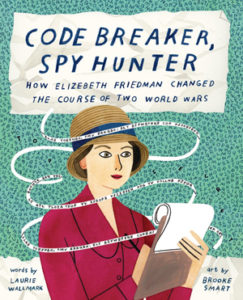
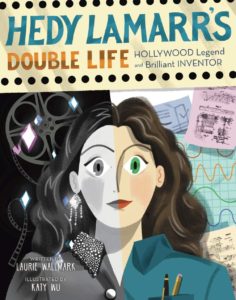
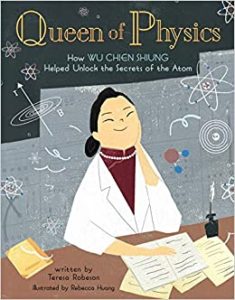
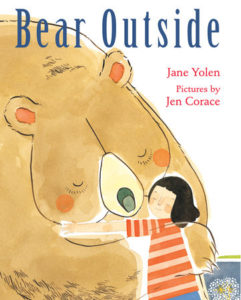
 Octavia Saenz is an editor and cartoonist based in Brooklyn,
Octavia Saenz is an editor and cartoonist based in Brooklyn, 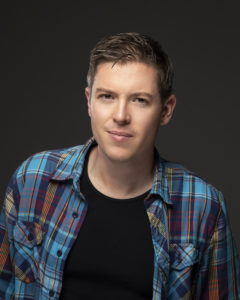
 This month, we welcome Stephen Barr to the
This month, we welcome Stephen Barr to the 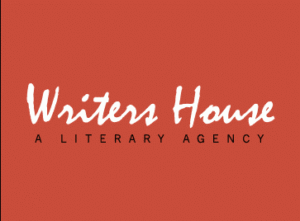
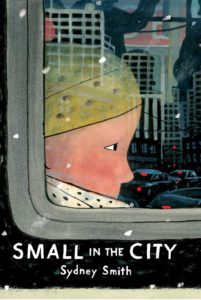
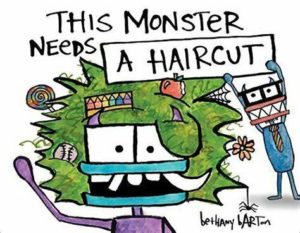
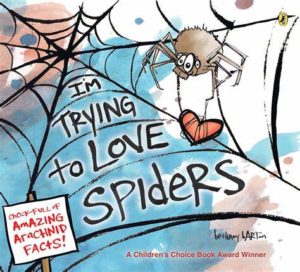
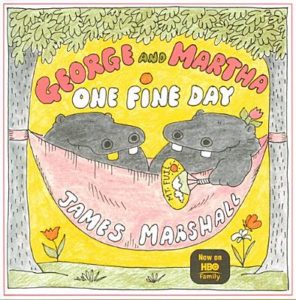
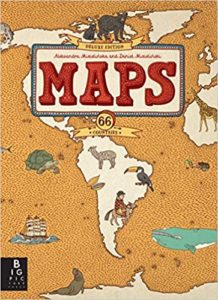
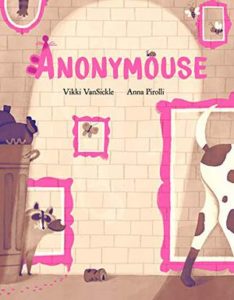
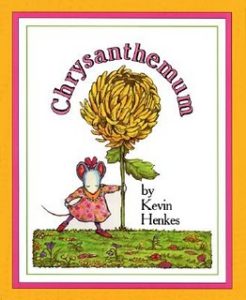
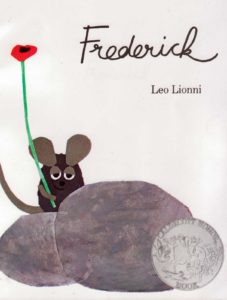
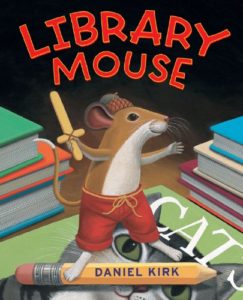
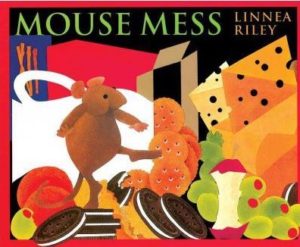
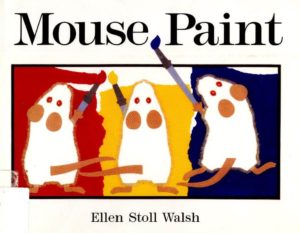
 When I saw that
When I saw that 








